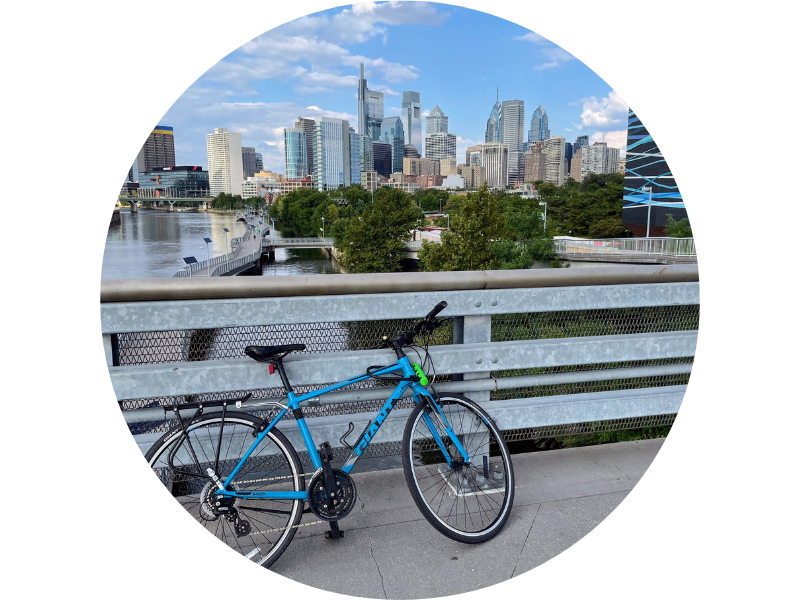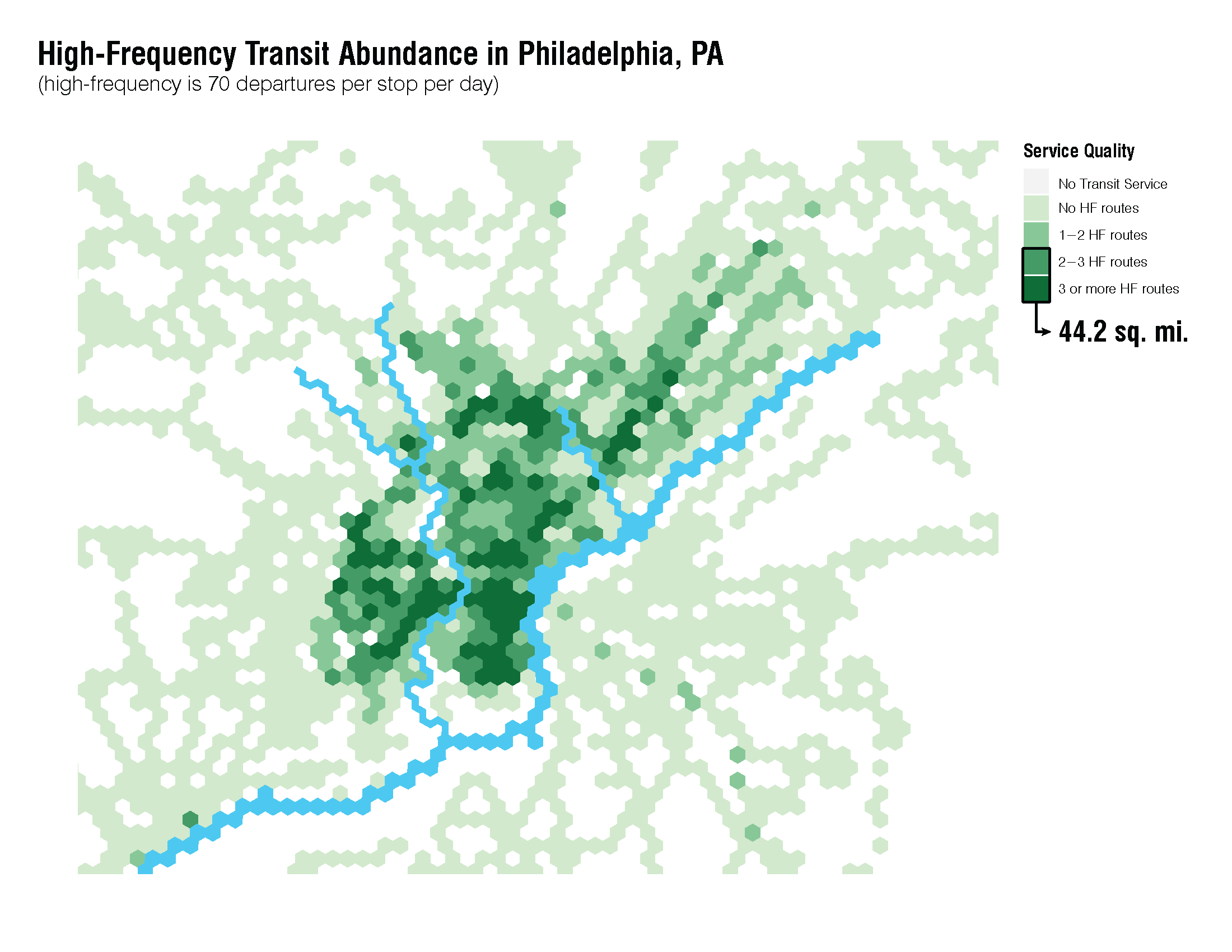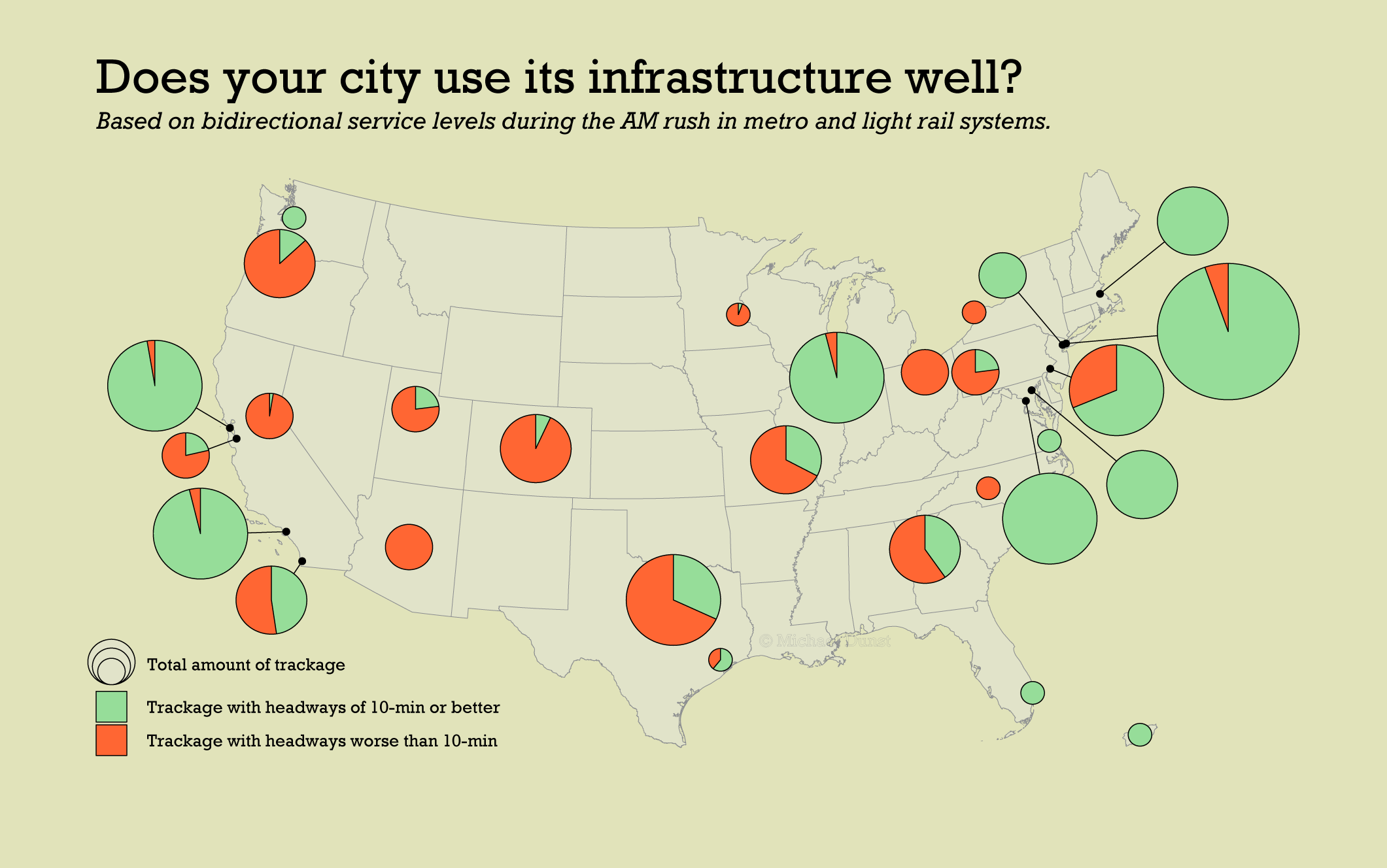Michael Dunst

University of Pennsylvania Master of City Planning student
Passionate about and skilled in transportation planning, real estate development, and creating livable cities.
View My LinkedIn Profile
Public Transit Analysis
Project description: As a transportation planning student in the U.S. in 2023, I am very interested in how transit agencies are doing their best to attract and retain ridership. In my free time, I developed two projects to analyze this. The first was a creation of a new type of transit visualization which goes away from a simple route map or point-based accessibility isochrone. The second was an analysis of rail systems in the U.S. and determining how much of their system delivers service that lives up to the high capital costs associated with the mode.
Transit Service Visualization

With this visualization technique, I created a fishnet of a metro area and shaded each cell with the number of high-frequency transit routes serving it. This techniques is an improvement on others because it lets you take a high-level look at a city and understand where transit service is best. For someone moving to a new city, they can easily look at this map and find locations with multiple high-frequency routes where they can move to.
I also combined multiple transit feeds for cities with multiple providers. By doing this, and calculating the amount of square mileage served by very good service, you can easily compare transit quality across metro areas, even where service boundaries, county boundaries, and other factors would obstruct traditional metrics.
Infrastructure Utilization

One current hot topic in the realm of transit planning is the high cost of new infrastructure. Another is the slow return of service by transit agencies. I created this map to let viewers compare system size and service quality across all light rail and metro systems in the U.S. My goal with this was to make someone think more deeply about the state of U.S. transit. Is a fixed guideway worth the cost if the service isn’t going to be better than every 10 minutes during rush hour? Do we underrate a system like WMATA, which is one of the nation’s largest and also provides 100% 10-minute headways or better during the AM rush.